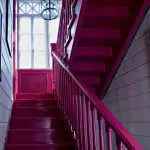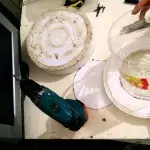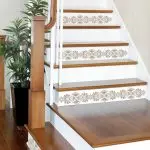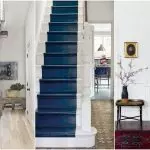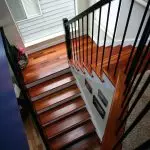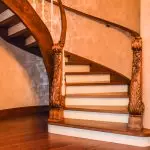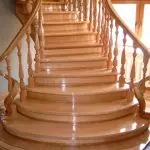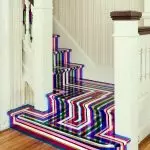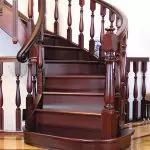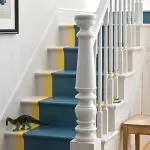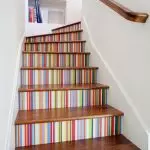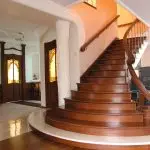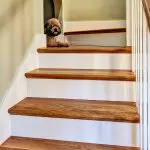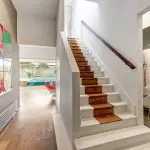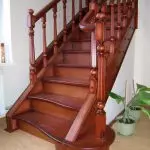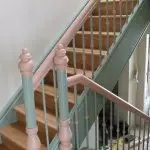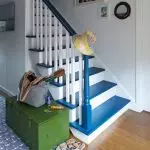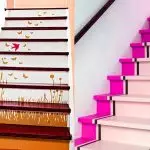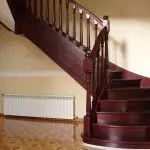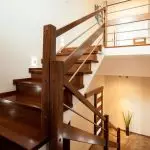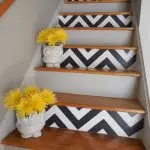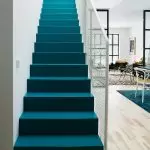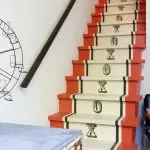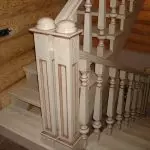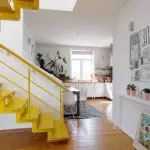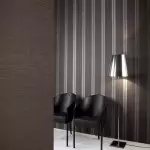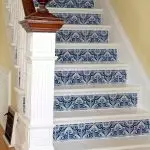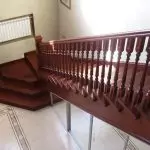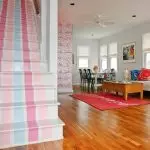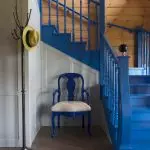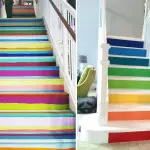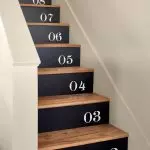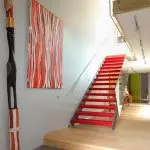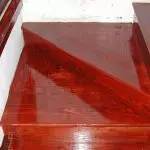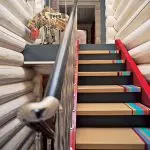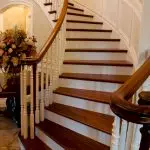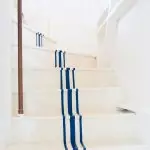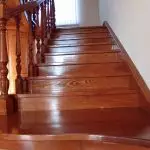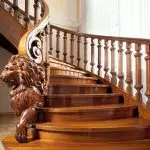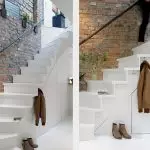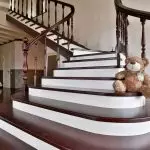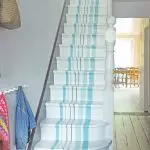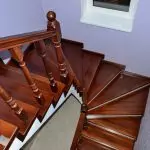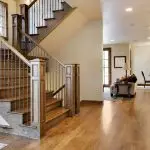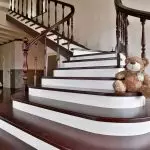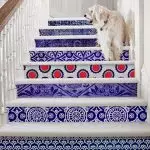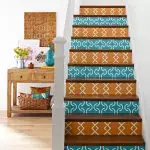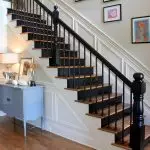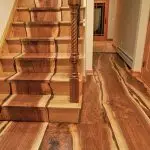Modern private houses and cottages are distinguished by the presence of two and even three floors. Due to the superstructure, you can get an additional area, set out several rooms or take the storage room. For a quick and convenient transition to the second floor and the ladders are constructed, which are more often made of wood. And it is not surprising, because the material is well processing, it is easier to make a staircase with your own hands.
Of course, the tree is characterized by a beautiful texture and natural color, and the stairs from it can act as a spectacular addition to the interior. However, this material is subject to external influences, and with time anyone, even the most beautiful wooden staircase loses its attractive appearance. The operational properties of wood are reduced.
To avoid such consequences, specialists are recommended to cover wood with special protective compositions. And in order to give the stairs more aesthetic appearance, no painting procedure do not do. From this article, you will learn how, most importantly, how to paint a wooden staircase, which paint is best suited for this, consider the features of the staining procedure.
Requirements for painting
To the process of painting a wooden staircase worth considering carefully. First of all, you need to decide what result you want to achieve in the end. This will help with the choice of one or another painting composition, working tools and processing technology.
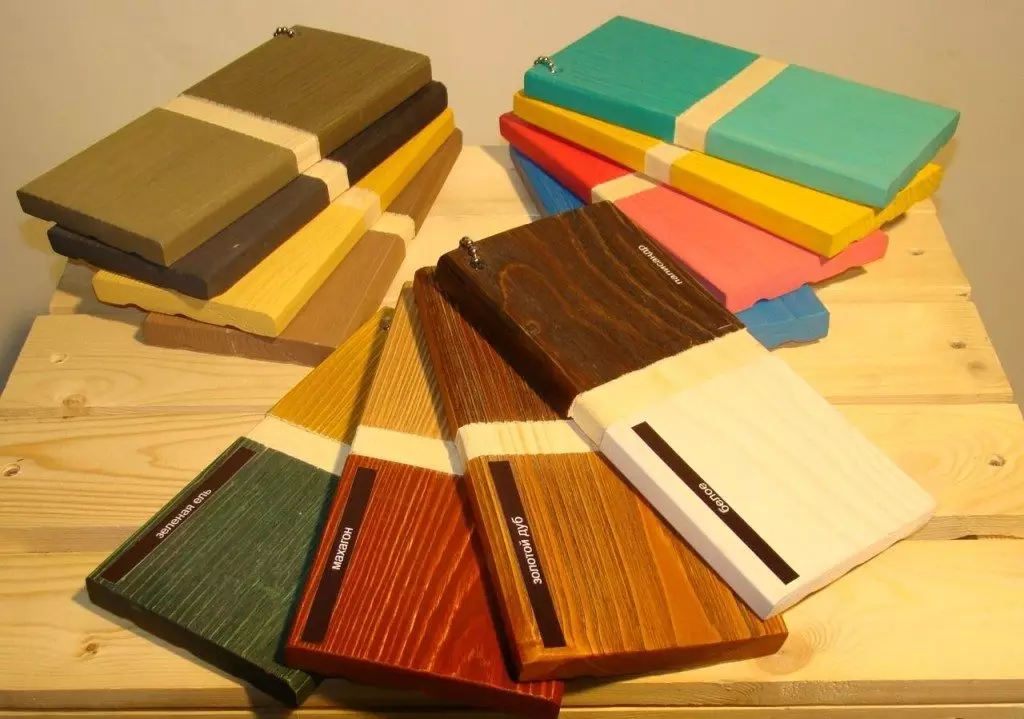
Before you go to the store for materials, you should familiarize yourself with the basic requirements that are presented to the Painting Procedure of Tree Stairs:
- If the design is made of an expensive wood breed with a beautiful texture - it is better to emphasize it, and not paint. In this case, it is necessary to abandon the preliminary priming of the surface, and the paint is chosen with a low degree of covers.
- Lacrification is an alternative to staining, which also allows you to emphasize the natural drawing of wood. You can choose a transparent or tinted varnish. In the latter case, it becomes possible to significantly change the appearance of the stairs.
- If painting is planned inside the house, give preference to paints or lacques with the properties quickly dry. It is recommended to choose compounds that do not have a strong caustic smell, and better those that marked "odorless" or "eco".
- For painting the staircase installed outside the house, which leads to the attic, more resistant paints or varnishes are more suitable, which are able to withstand negative exposure to the external environment. As a rule, such compositions are made on the basis of solvents.
- Regardless of the location of the stairs (inside the house or outside), the steps need to be treated with coloring material, which is resistant to abrasion. This will allow for a long time to preserve the aesthetic appearance of a wooden structure.
Important! Before buying one or another composition, it is worth studying the content on the package and get acquainted with the recommendations for applying it.

Species of paints and tips on choosing
A wide range of paints and varnishes, presented in construction stores, allows you to choose the composition that is suitable in certain conditions and meets the requirements of the consumer. However, for those who do not understand the properties of the paints of different groups, the choice is significantly complicated. To acquire a truly suitable product, you need to have at least some idea of its composition. Next, consider what kind of paints exist, and which of them are optimally suitable for processing the wooden staircase to the second floor.Alkyd
This type includes paints based on alkyd resin. This substance is obtained by mixing alcohol (glycerol or pentaeryritis), acid and vegetable oil. Due to its chemical composition, alkyd paints have the property to quickly dry as a result of polymerization (when interacting with air molecules). And this is one of the most important advantages. In addition, alkyd resins-based dyes may contain antiseptics that are so necessary for wood processing against rotting, forming fungus and mold.
Alkids form a protective film that protects wood from mechanical damage. They are not toxic and applicable to internal works.
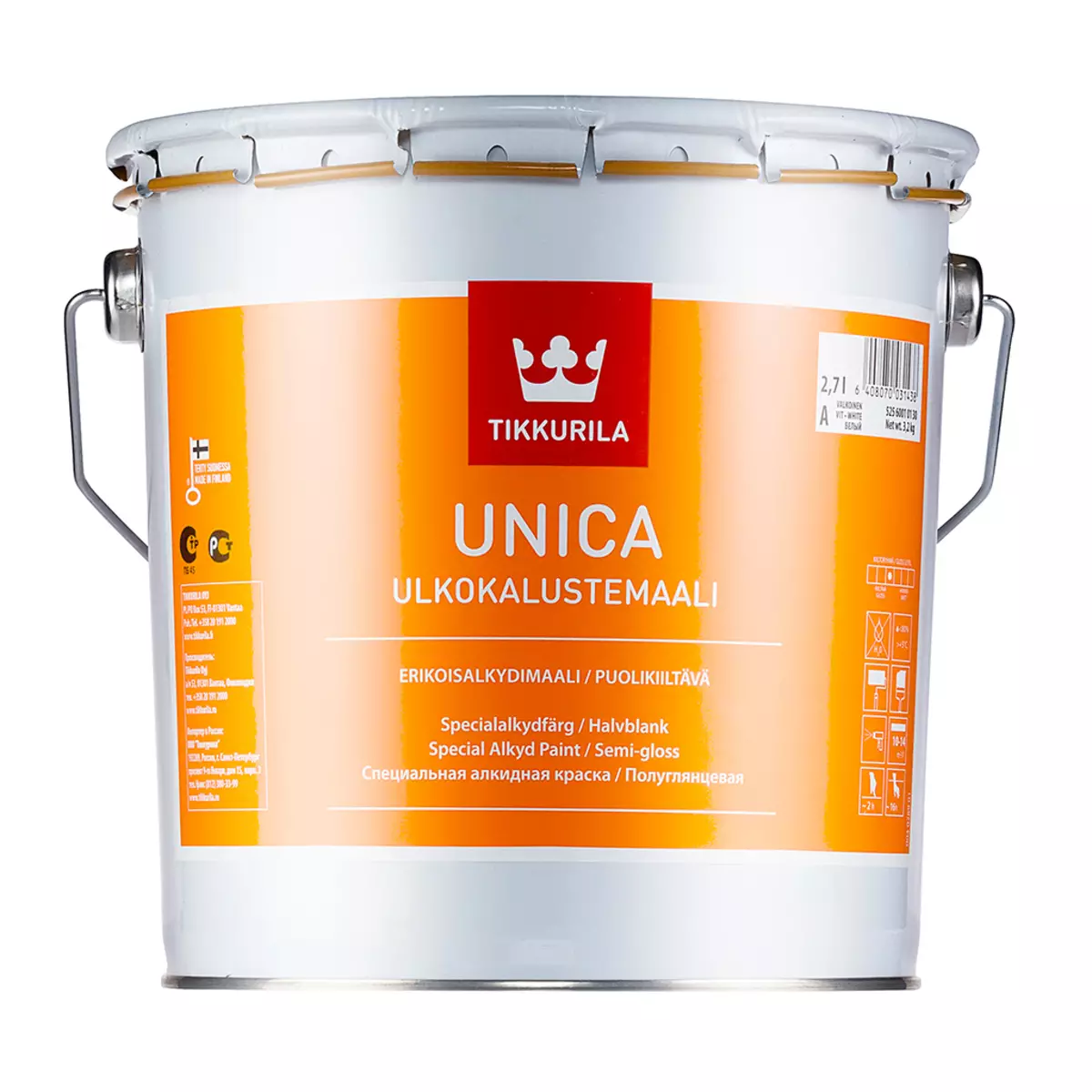
Acrylic
Such colors are most often produced on a water basis, due to which they are able to quickly dry, do not have a sharp smell due to the lack of harmful chemicals in the composition. It is possible to note the fact that acrylic solutions will not fade into the sun and do not lose their original color. The maximum operating time of the coating is up to 20 years.
Of the additional benefits: water-based acrylic paints allow wood to "breathe", a wide choice of color is presented.
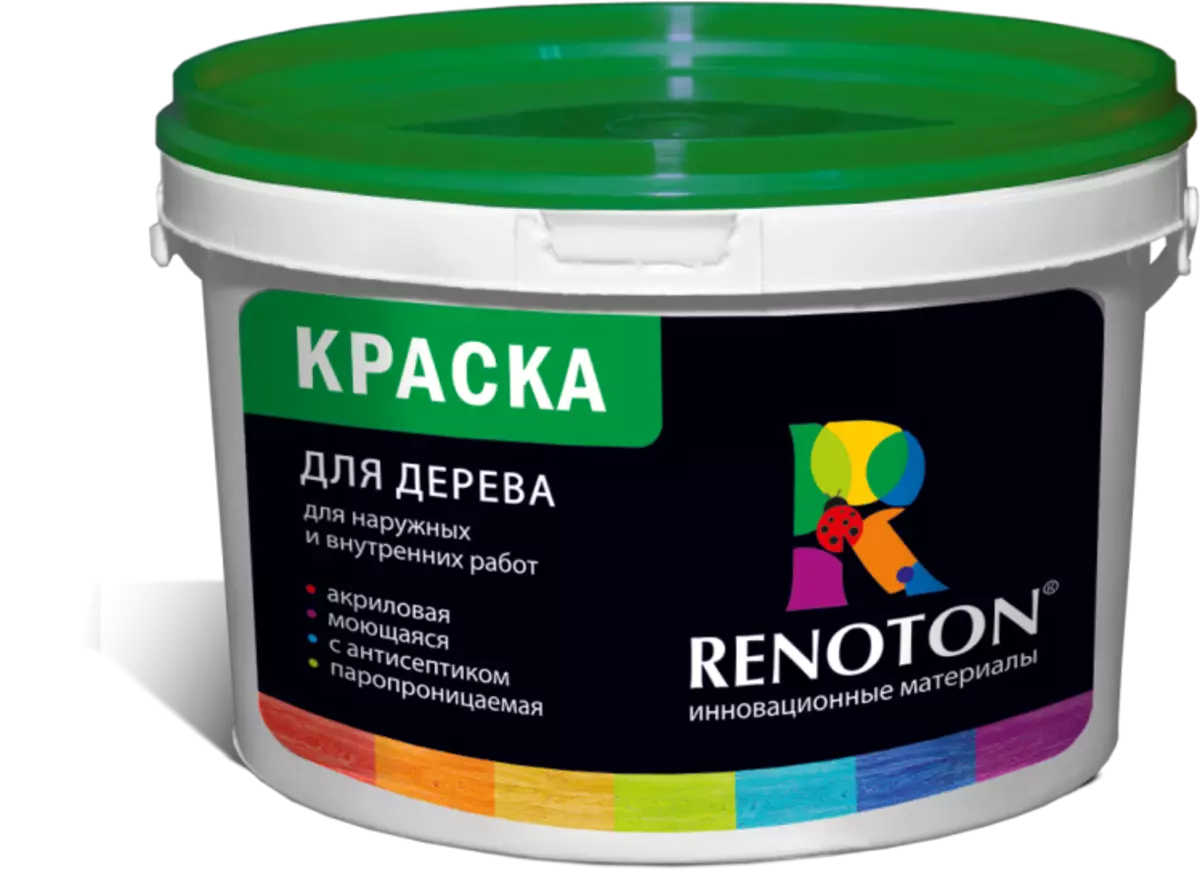
Oil
Such paint products have been used for a very long time, and today it is no less in demand. Its main advantages can be considered low cost and a long operational period (up to 5 years). And on this all the advantages are pumped. Wood covered with oil paint is not able to "breathe", the decorative layer will dry and quickly engages, the staircase is not protected from mechanical damage.
In the oil dye contains harmful chemicals, so this material is better to apply for external work.
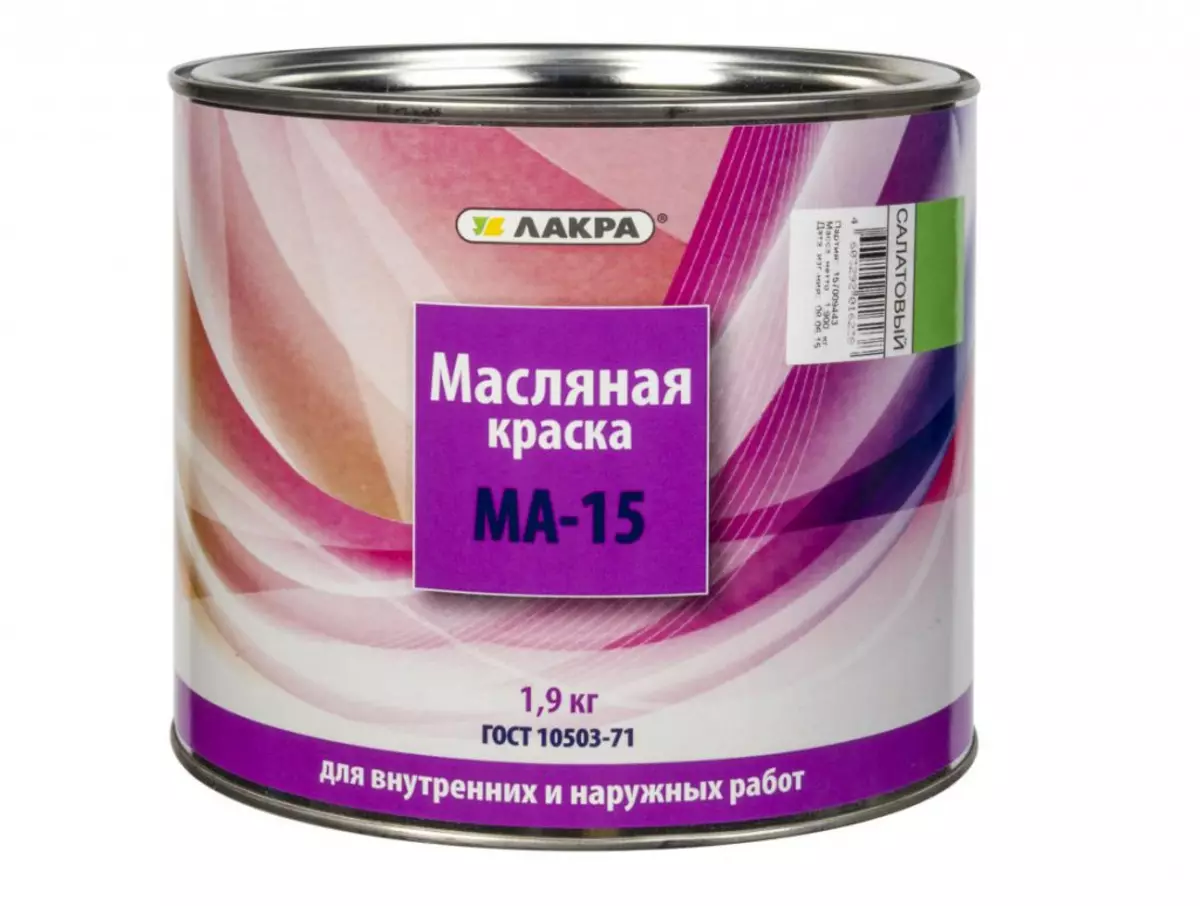
Emalevy
Emale paints for the wooden stairs are considered the best option, especially if coloring is planned in a residential room. And all because it is fast-drying high quality compositions, which are based on no harmful components. The coloring enamel falls on the surface with a flat layer, ideal, if you need to completely cover wood without cleansing.
It is also important that enamel has high protective properties - it forms a dense film that minimizes the impact on the wood of ultraviolet, moisture and temperatures.
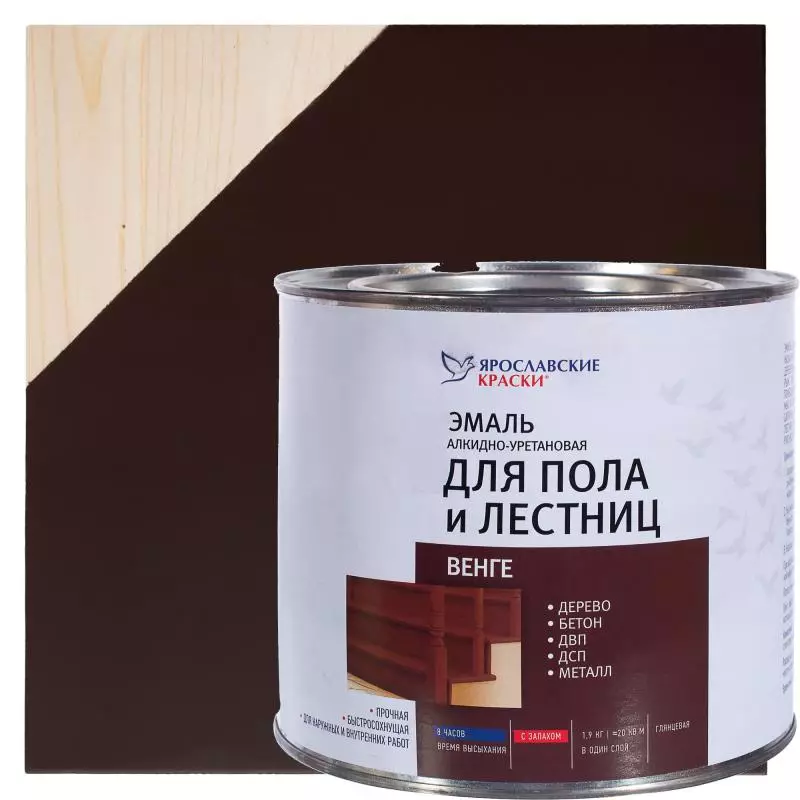
Varnish
Varnish is not paint or enamel, it is a translucent composition, mainly intended to emphasize the natural color of wood and its texture. It is glossy and matte. To give brilliance or update the old staircase, it can be covered with glossy varnish. In the solution can be introduced and coloring pigments can be introduced, however, they perform a tinting function - such a color is not able to completely overlap the pattern of the tree.
Article on the topic: How to separate the staircase in the house: Choosing a facing material | +65 photos
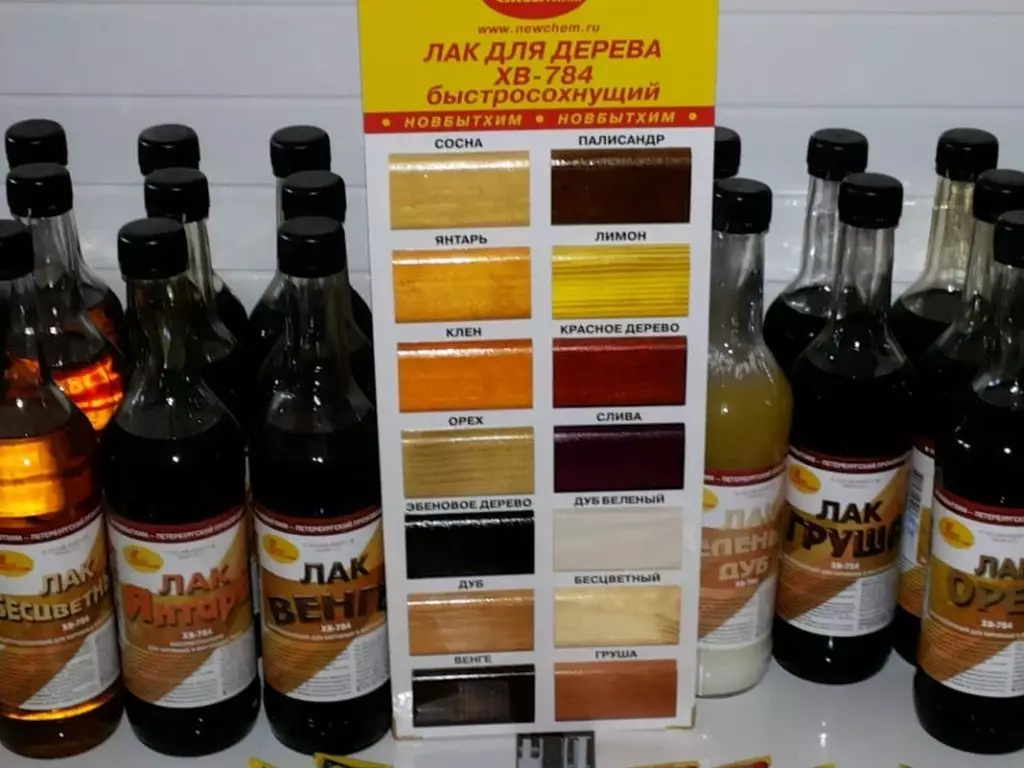
In its composition, varnishes are on aquatic and alcohol basis, there are also nitrocellulosic solutions. The latter are more suitable for outdoor work, as they contain hardeners and plasticizers, and therefore, the decorative coating will be durable and resistant to atmospheric influences.
If you need to handle the staircase inside the house, then you should choose a varnish on a water-alcohol basis. For decorative purposes, a shellac lacquer is used for finishing.
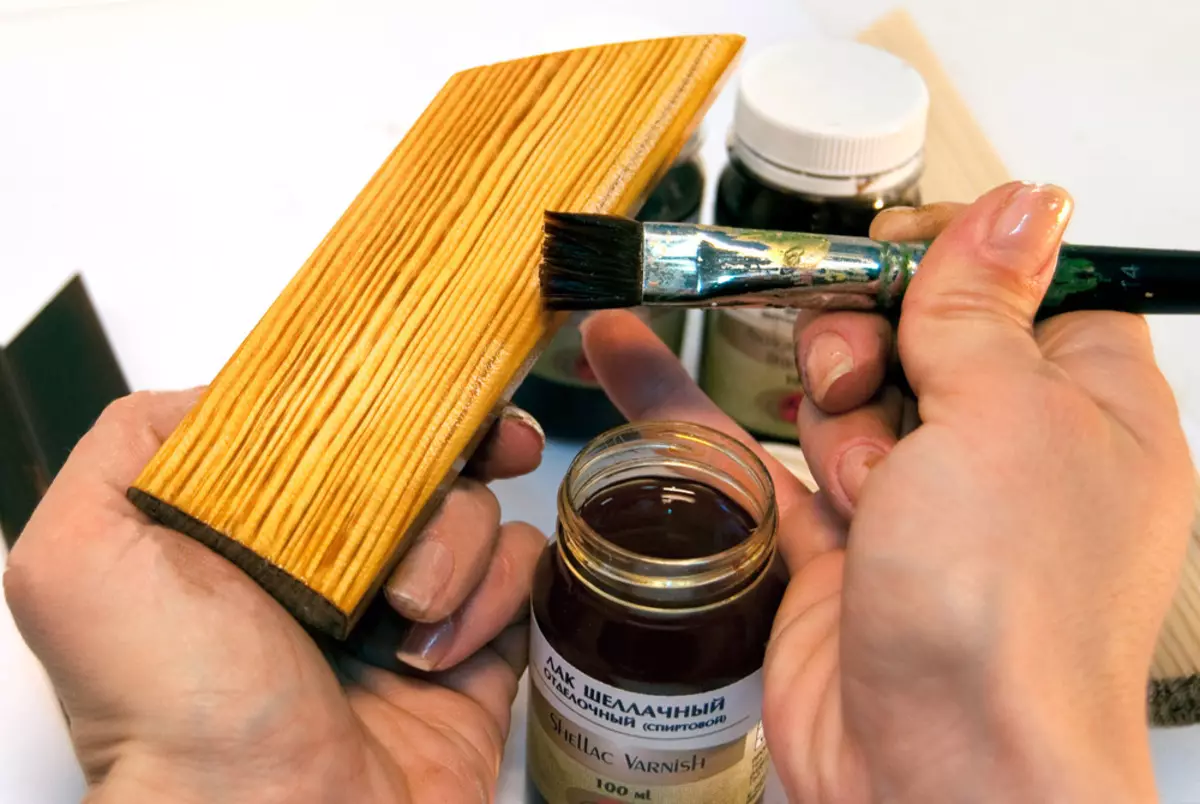
Morlogs and impregnations
Morners and special impregnations are another options for wood, designed for wood. With their help, you can handle a completely staircase or tinting individual parts (steps, railings). In addition to giving the tree of various shades, such solutions still perform a protective function, since they have bioco and flame retardant properties. It is for the coating of a wooden ladder to use formulations on a wax and oil basis.
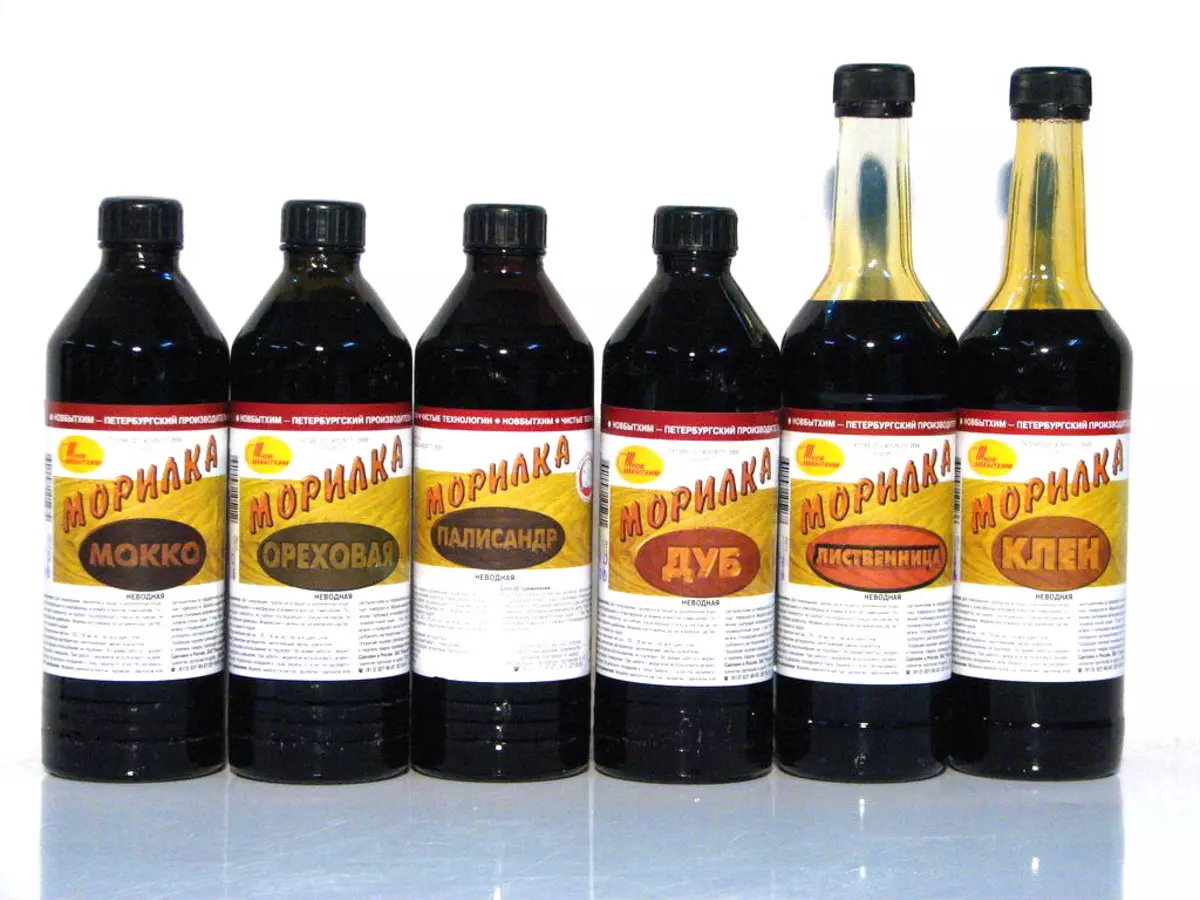
The stairs painted staircase are recommended to be covered with a special politician to give a larger shine and wear resistance.
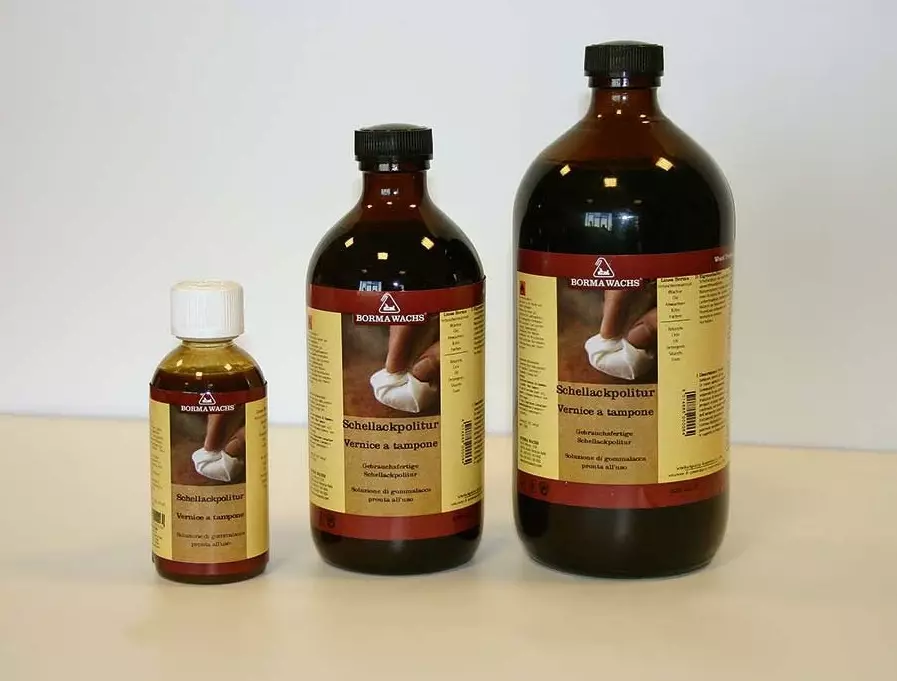
What to pay attention to
Above, we looked at the variants of paintwork materials that can be applied to paint the stairs with their own hands. To select a suitable product and get expected results, you need to take into account the many points associated with the location of the staircase and the intensity of its operation.
We list the main factors determining the selection of a type of LKM:
- Mechanical and other loads. If the staircase on the second floor is often used, it is worth choosing a solid and abrasion-resistant coating.
- Wood breed. If the stair march is made of soft wood, for example, from pine, then the surface is necessarily painted with enamel or alkyd paint. Larch has a beautiful natural drawing - it is better not to paint, but cover with colorless or tinted varnish.
- The presence of ventilation. It depends on this factor, which composition is better to choose for painting inside the house - odorless or enamel, solvent-based lacquer. Most often, the staircase is installed next to the input zone, so there should be no problems with ventilating problems.
- Financial opportunities. If there is no funds for the purchase of expensive LKM, then you can also purchase products of cheaper, the main thing is that the choice is not to the detriment of the quality of decorative coating.
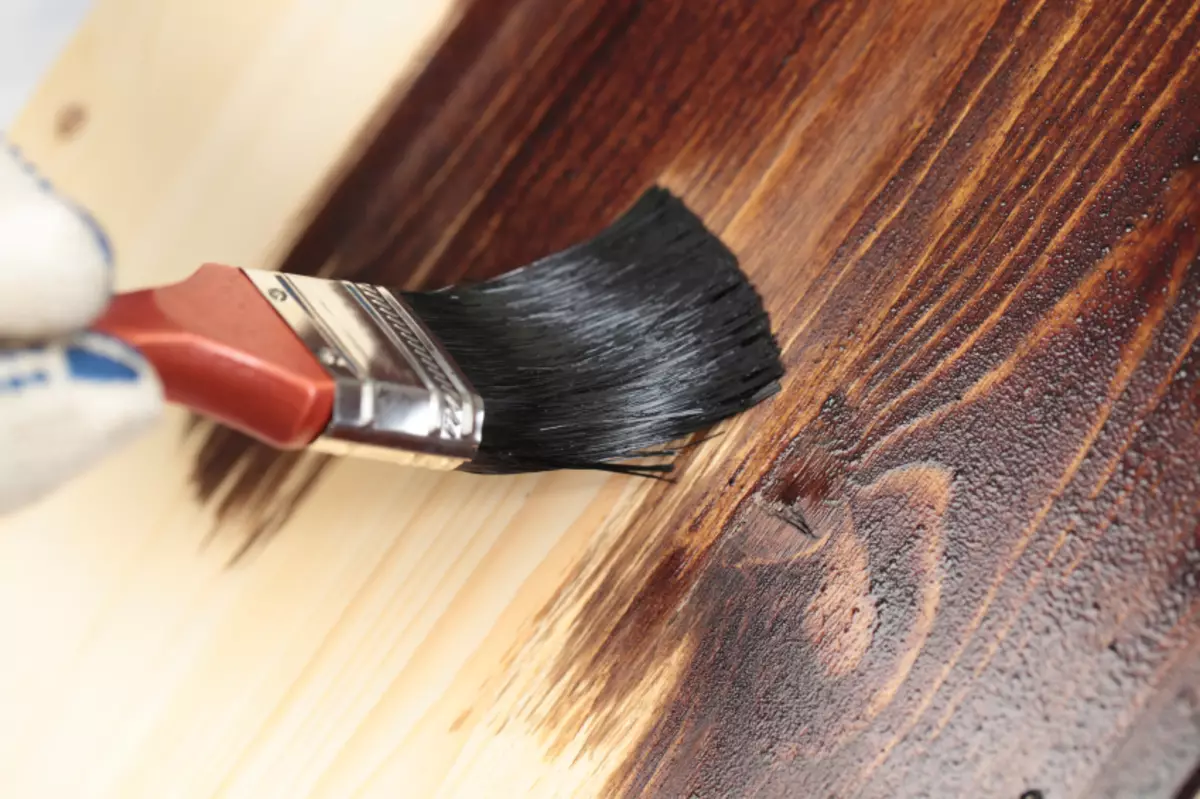
Staining technology
Many specialized firms offer their services in staining stairs from different wood species. You can contact one of such companies, but do not forget that painting works can do in a fairly round sum. If you are not ready for an impressive financial cost and want to save a family budget, it is better to spend the whole procedure with your own hands, especially since it is quite simple.Any coloring technology, be it paint or varnishing, includes such steps as surface preparation and decorative layer. Moreover, the choice of painting tools and the technique of their application is not as important as the first stage. From how qualitatively a wooden surface will be prepared, the final result of the color will depend on.
Article on the topic: How to choose a compact staircase to the second floor [main types of designs]
Preparation of the foundation
First of all, the surface of the staircase should be cleaned of dust, dirt and large garbage. Further, the state of steps and march is estimated in general, since if there are serious defects, additional materials for the restoration may be required. If the design is completely new and has been made of coniferous wood, the obligatory preparatory stage will remove excess resin from the inside.
Important! The resin contained in the fibers of a coniferous tree may interfere with a good absorption of paint material - over time, such a coating will begin to peel.
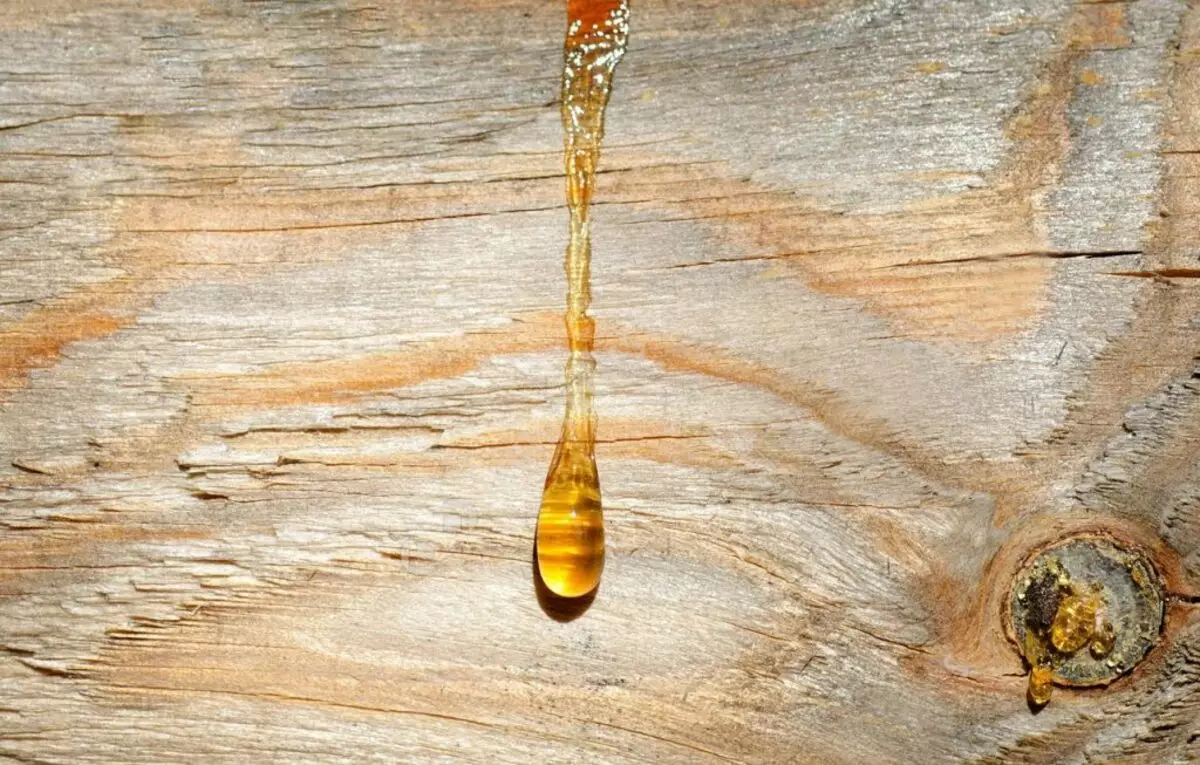
To get rid of the resin, it is possible to prepare a special solution: 1 l of hot soap water, 200 ml of acetone, 10 g of ethyl alcohol, 50 g of potash and as much food soda. The resulting liquid is applied to the surface of the boards with a wide mask brush, after which the staircase is left to dry for several hours. As a result of absorption, the resin solution will gradually go out from the back side of the boards.
Regardless of the wood breed, from which the staircase was made, its surface preparation includes the following works:
1. If the staircase has already been once again painted, it is necessary to remove the old coating. For this, specialized washes are used (sold in any construction store with paint products). After applying, the old decorative layer can be easily removed using a spatula.
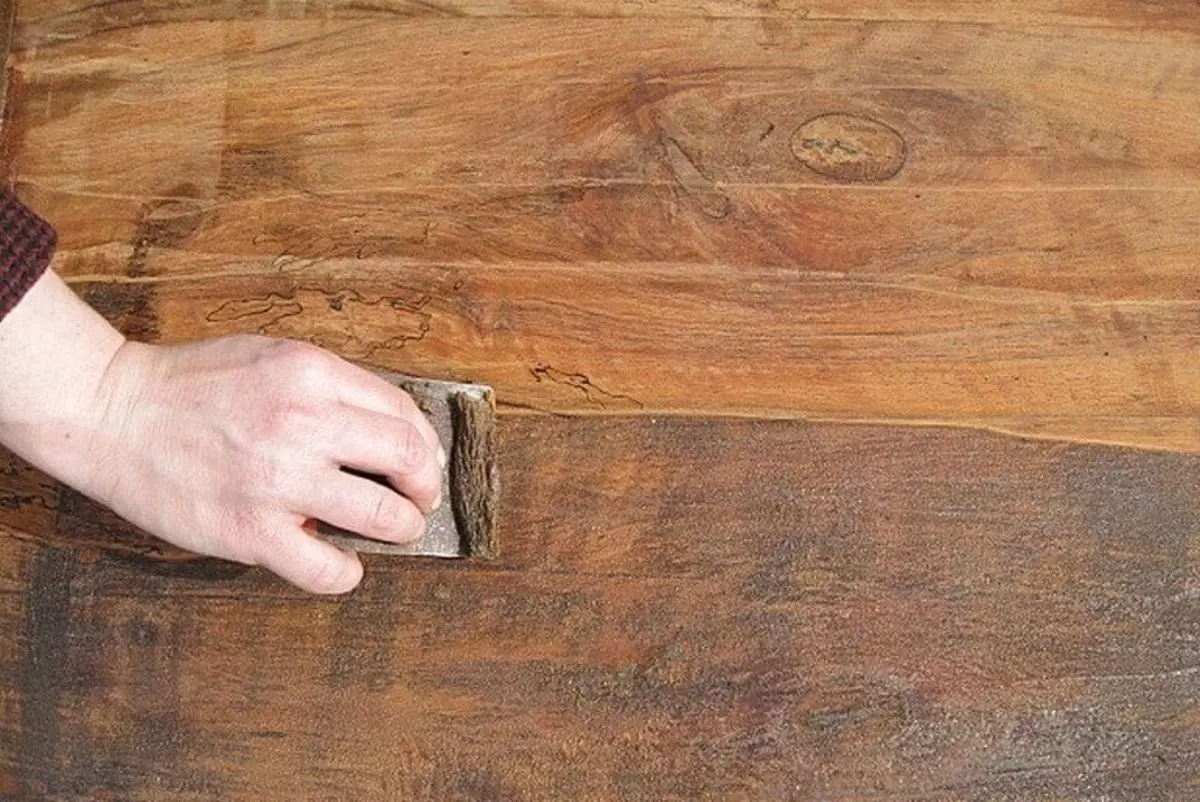
2. It is especially important to handle the surface of the stairs to get a smooth and even base under painting. For this, sandpaper large grain paper is used, but the grinding will save you time and reduce labor costs.
3. In the presence of chips and cracks, they need to be embedded with a putty on a tree. Such products are also sold in any construction supermarket. But it is possible to save, prepare an alignment mixture of wood dust and a colorless varnish.
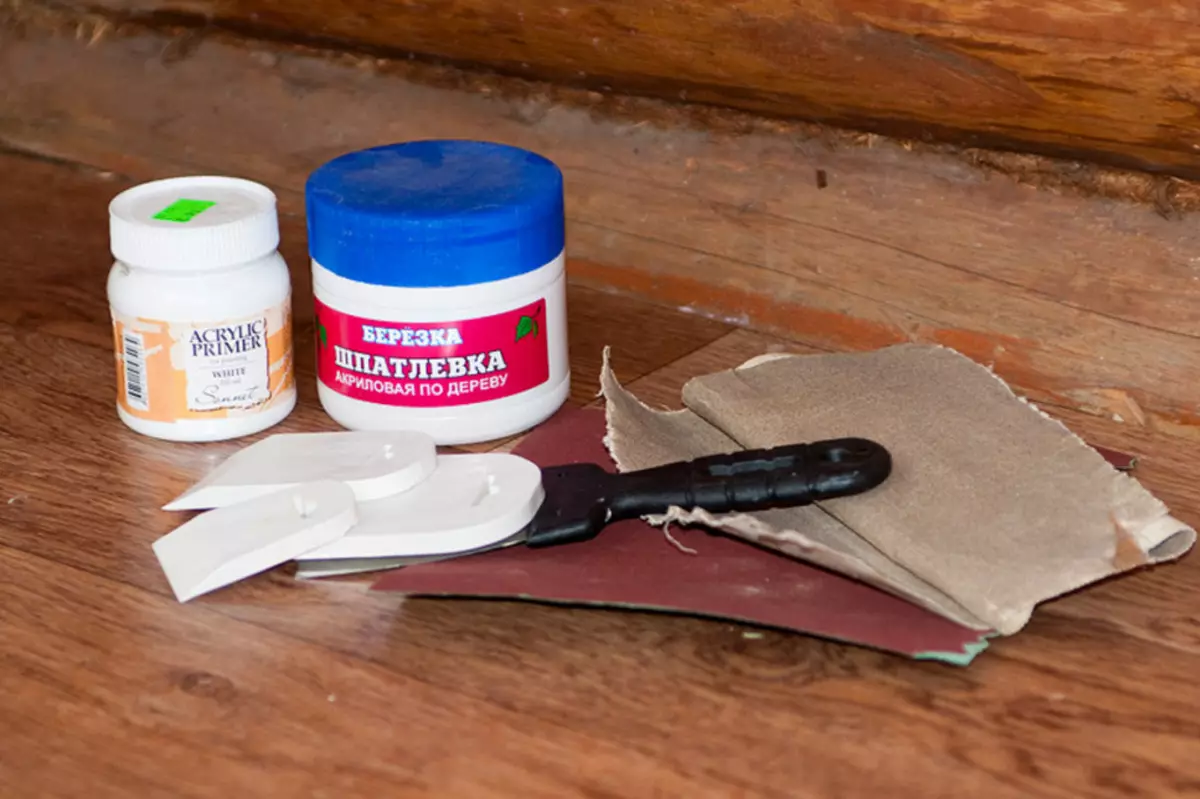
4. At this stage, a total grinding of the surface of the fine-grained emery paper is assumed. After such a processing of the stage, the railing and balasins should be perfectly smooth.
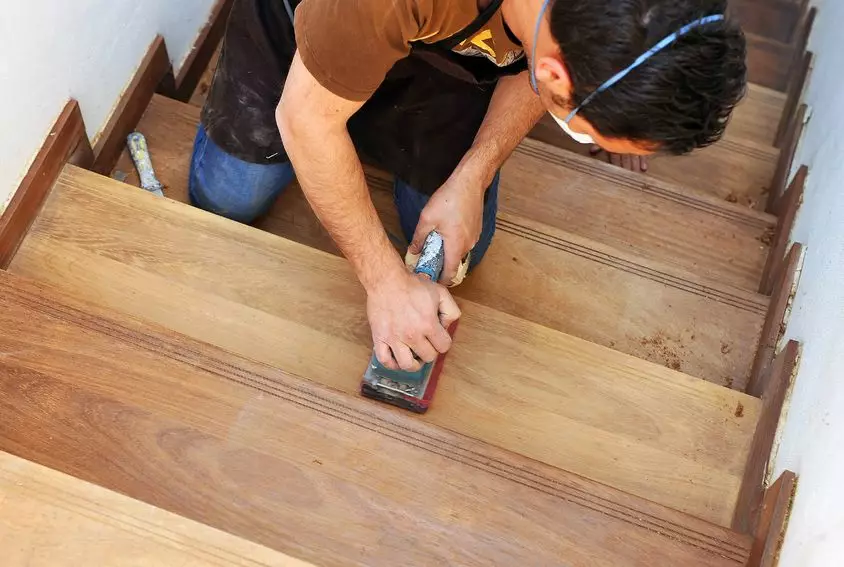
5. For a better clutch of paint or varnish with the surface, do not do without primer. It is advisable to take a composition with antiseptic properties. It is necessary to put the primer so that it penetrates well in all the gaps, notches, places with carvings (if available). Wait for complete drying.
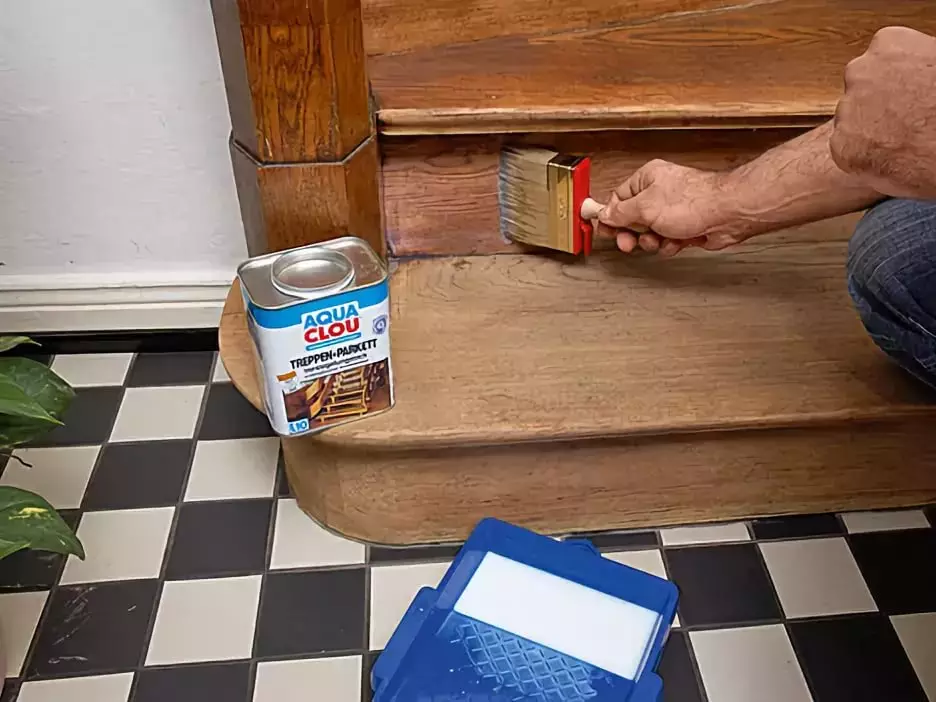
After completing all the preparatory work, you can safely begin the finish finish of the stairs. About how it is necessary to paint, what tools it is better to use, it will be discussed further.
Coloring [Application Instructions]
Before painting the staircase, it is important to prepare well. This means that you need to find workwear, which is not sorry to dying, pick up suitable painting tools. If you have purchased a paint sufficiently liquid consistency, it is easier to perform color with an electric or pneumatic spray gun. Such a tool will significantly reduce your labor costs, and all work will take only a few minutes.
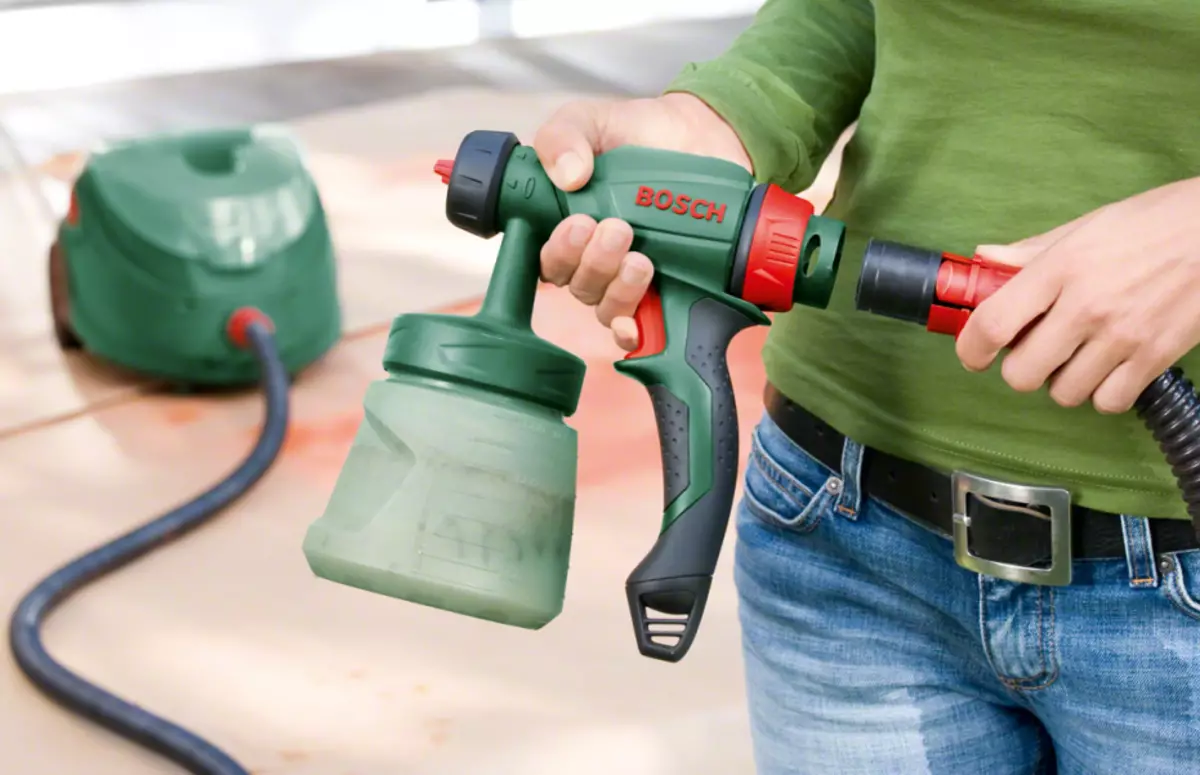
Important! When working with the kraskopult, you need to use precautions. It is recommended to wear safety glasses so that the splashes of paint do not get into the eyes, as well as a mask or respirator, especially when using solvent-based solutions.
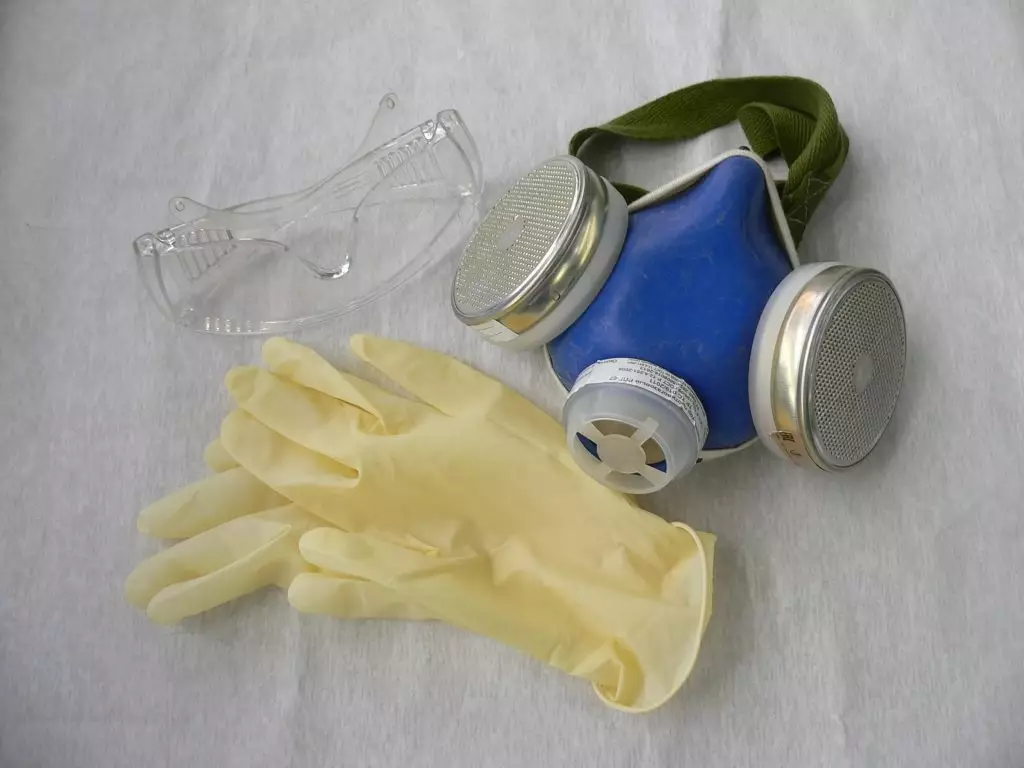
If there is no spraying device in the presence, you can use and brush, and roller. Here the main thing is to choose the instrument correctly. To apply a liquid coloring composition, wide flint brushes with soft bristles are more suitable, for applying thick - more rigid, but smaller size. The roller will be useful if you need to paint wide steps.
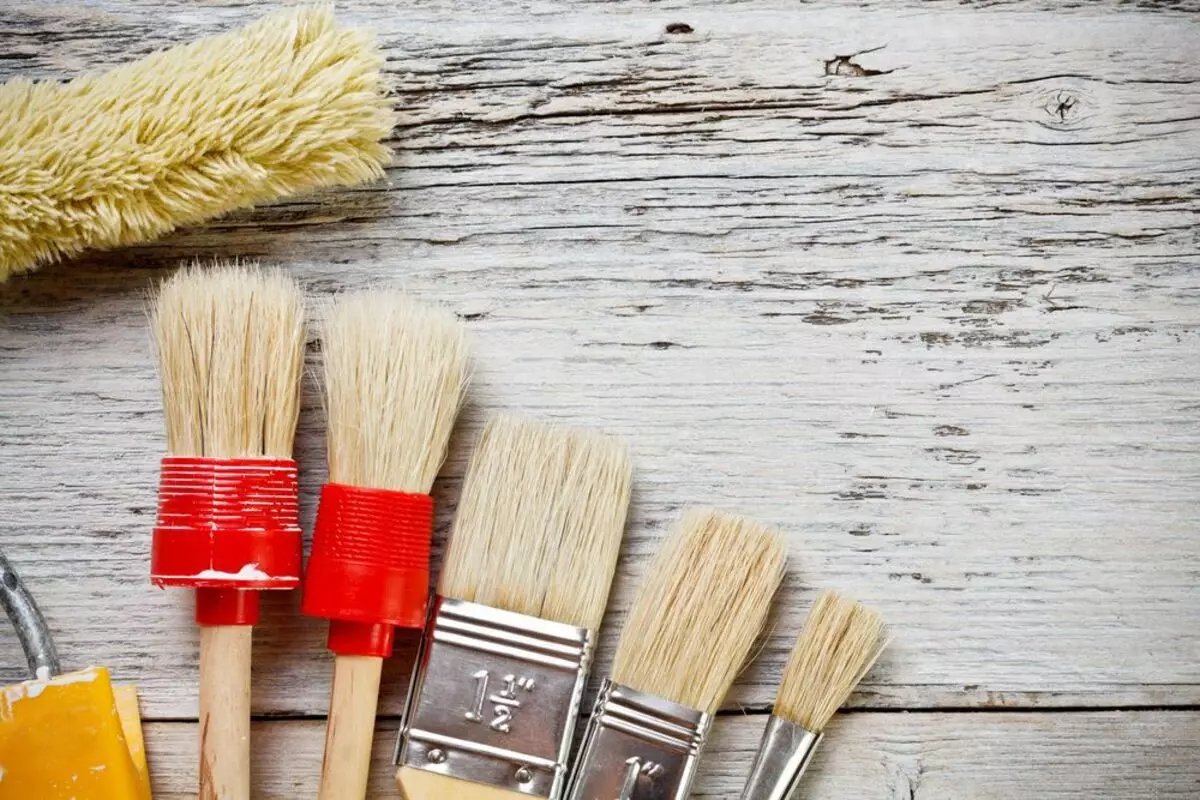
The process of applying paint or enamel looks like this:
1. First you need to prepare a workplace. Shipping the floor next to the staircase with a passionate film or old newspapers, and a plot adjacent to the march, creek by paint scotch.
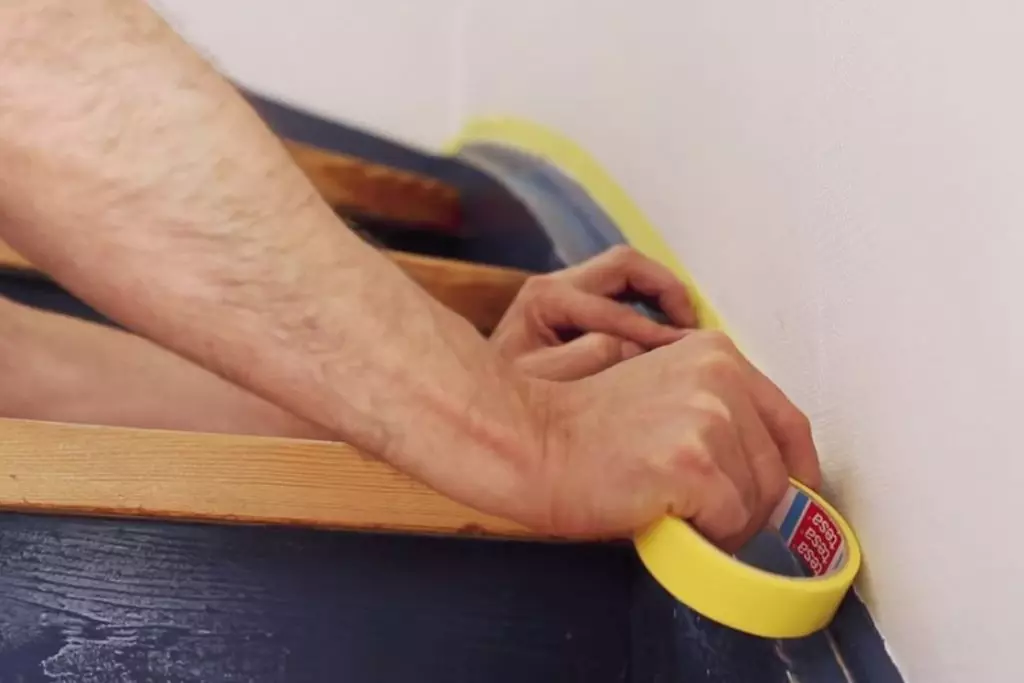
2. Opening a jar, a long wooden stick you need to thoroughly mix the composition before receiving homogeneity. There should be no lumps and water fluid over the paint material. If the paint is too thick, it can be diluted with solvent.
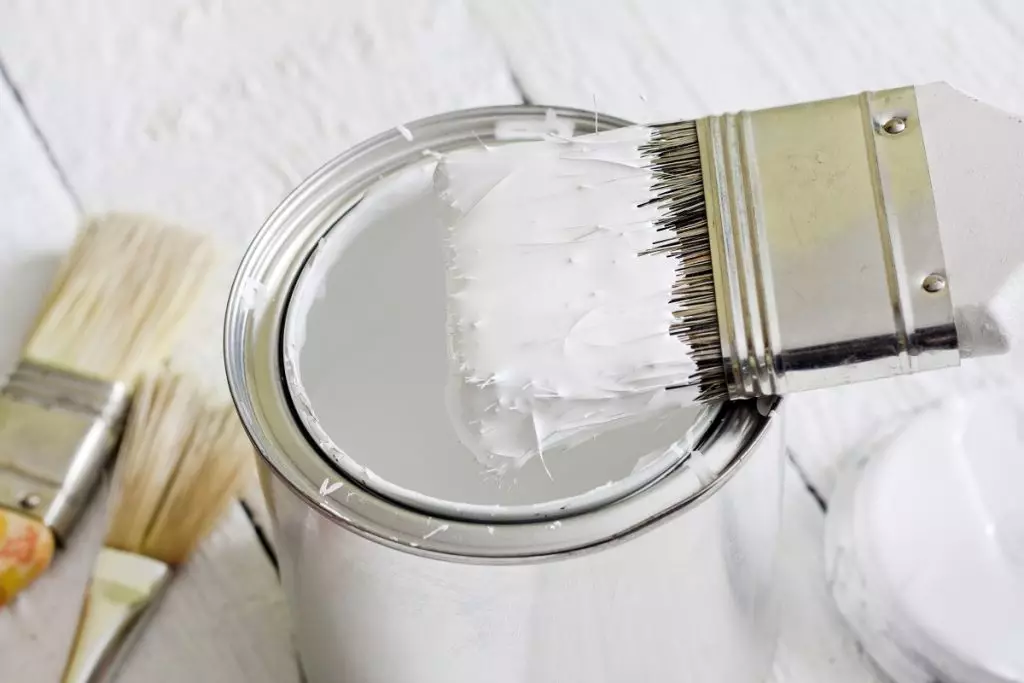
2. When using the tassels, it needs to be hushed into the paint and, while holding a tool at an angle of 45˚, apply the composition to the surface. The movements should be along the fibers of the tree.
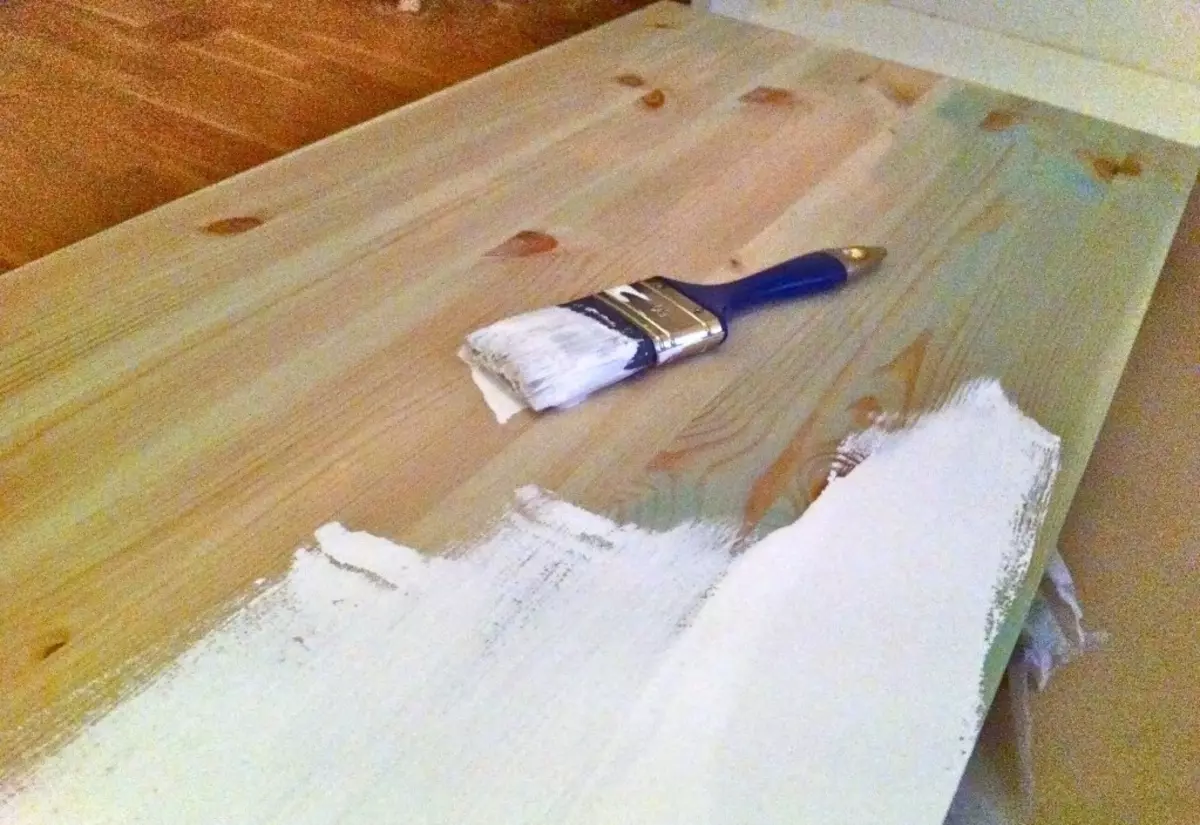
3. Usually the wooden staircase is painted in two layers. However, if the composition was chosen on a water basis, and you noticed that it absorbs into the woody material as a sponge, more than three layers may be required.
Article on the topic: How to calculate the stairs to the second floor: optimal parameters
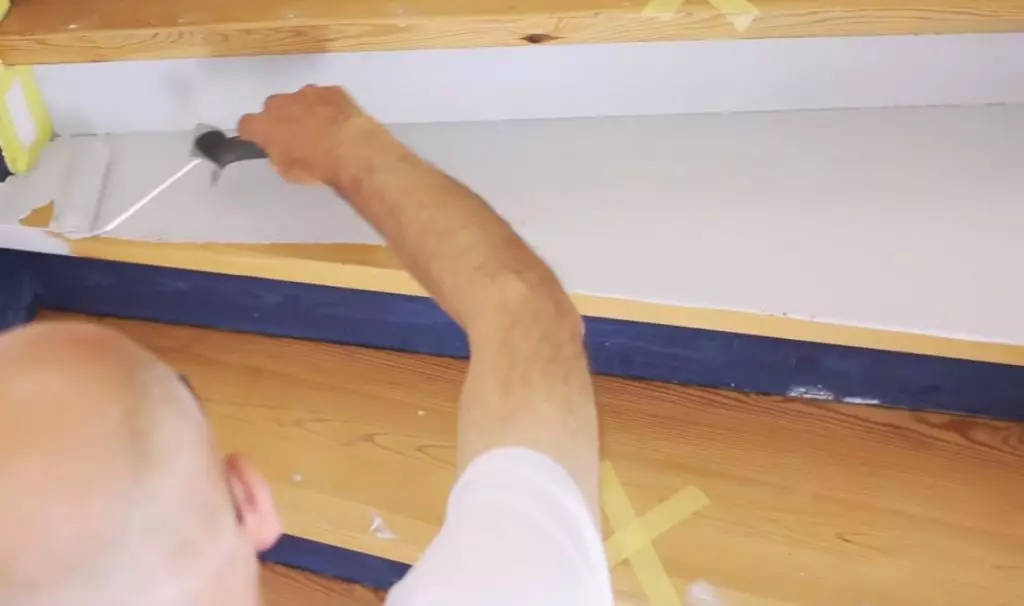
4. After applying the first layer, it is necessary to wait for a complete drying of the coating. This rule should be observed when applying each subsequent layer.
5. Especially carefully you need to process the joints of the balusne and rails, recesses, carved parts, curly elements.
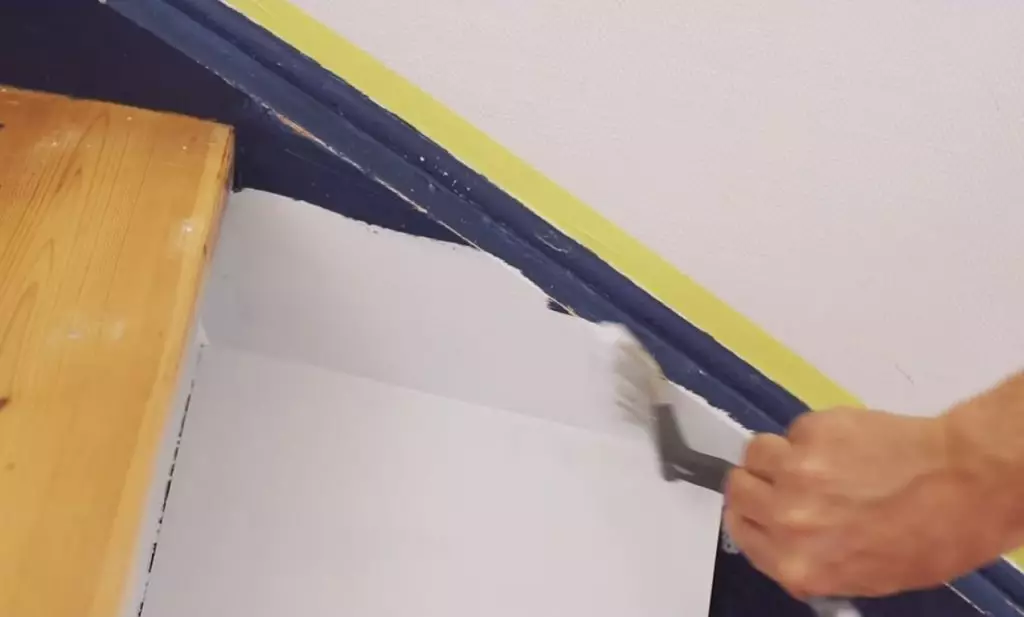
6. At the end of the step, the railing and handrails can be opened with colorless glossy varnish - this will allow the surface of the shine, and the entire product of the larger gloss.
On video: Painting of a wooden staircase (instructions and recommendations).
If you do not know which color gamut to choose to decorate the stairs, you can apply the classic method when the color of the decorative coating is slightly different from the shade of the walls and the floor. At the same time, it is important that the staircase is harmoniously fit into the interior and complemented the total color decoration.
Single staining is a more preferred option, but some color in several colors. This approach allows you to highlight the staircase on a general background and make it the main interior decoration.
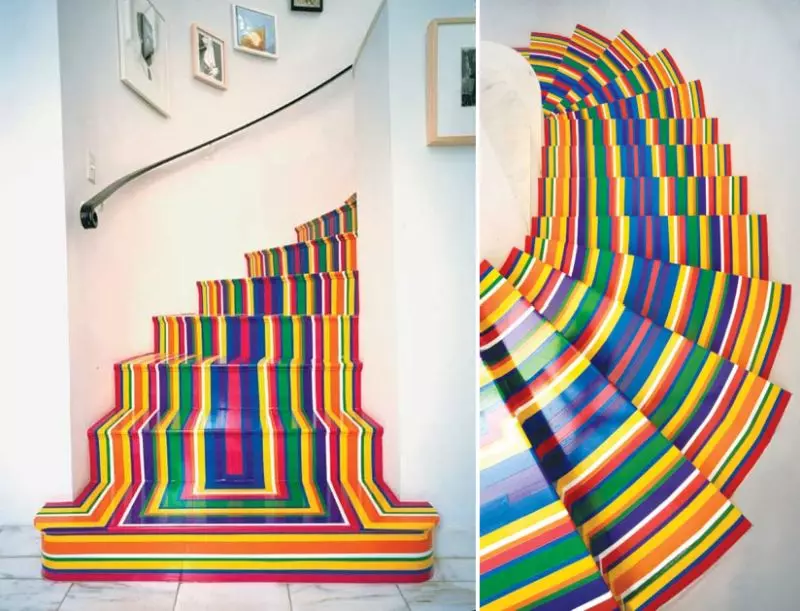
Laccurate [Application Instructions]
Before such a finish, the untreated staircase is polished only once. This is due to the fact that after applying the lacquer, all the villus of the surface fibers of the wood will still raise, and they will have to reinstall the grinding. The most optimal option is the interlayer processing of emery 180-220. It is also recommended to apply a special soil before varnishing, which will smooth all the irregularities.
After grinding the first layer, the wooden staircase always represents a pitiful spectacle. But do not be afraid after applying the second lacquer layer on a properly prepared basis, the situation in the root will change.
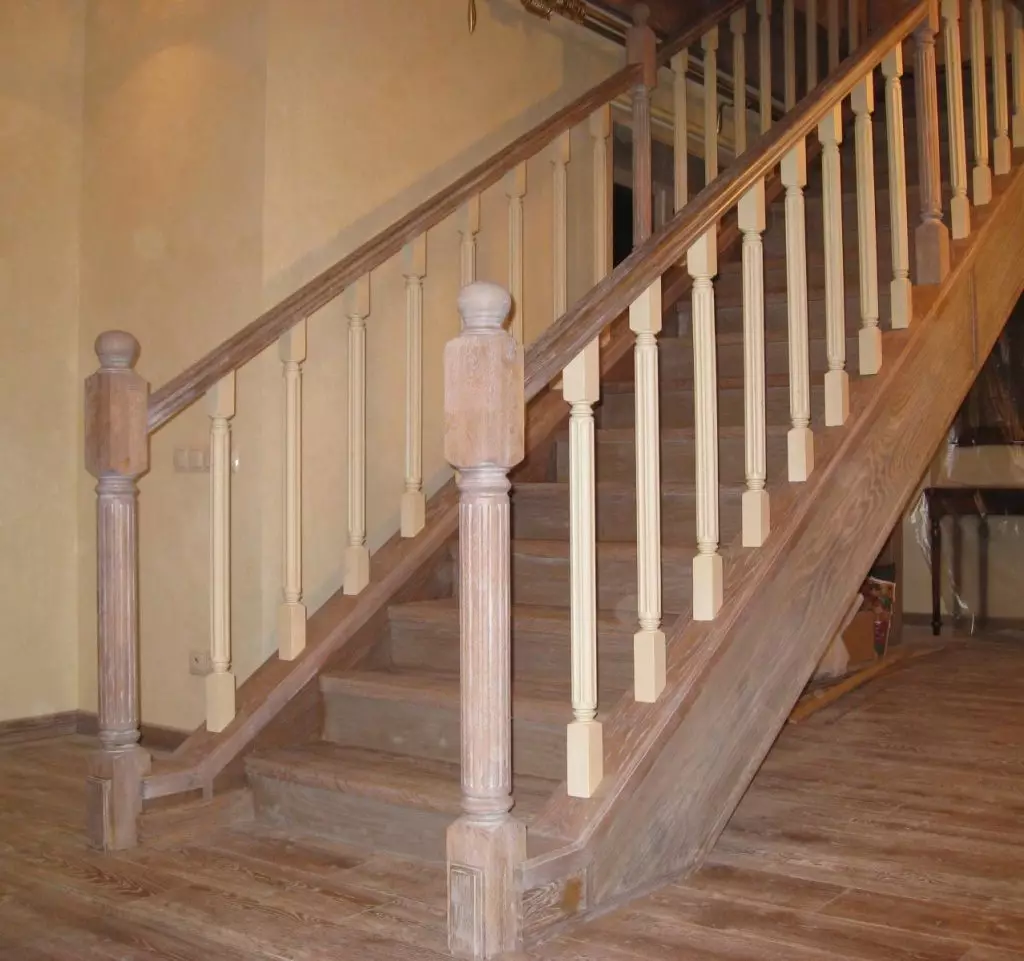
The varnishing process itself is not as complicated and includes several simple steps:
1. First you need to prepare the composition itself. If a two-component varnish was purchased, mix it as indicated in the instructions on the package.
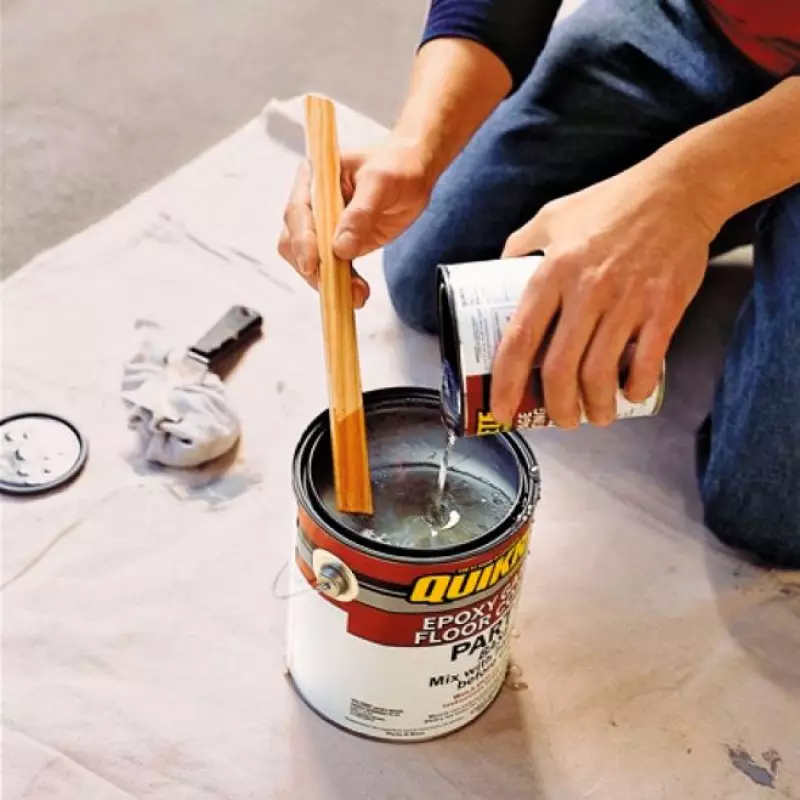
2. Loose a working tool in the lacquer (brush or roller), after which it is passed on the surface, causing a thin layer along the tree fibers.
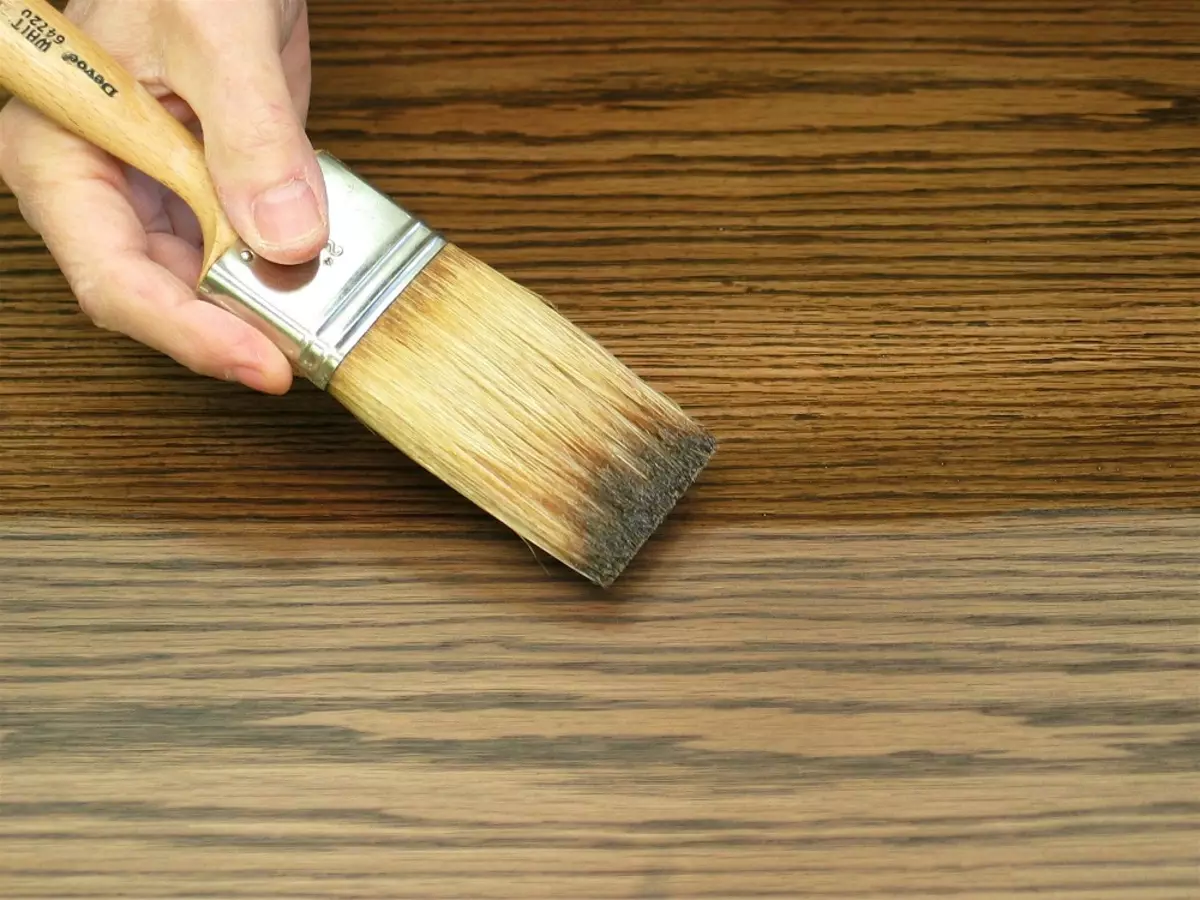
3. Be sure to wait for a complete drying of varnish. It will take about three hours. Depending on the selected type of composition, the drying process may exceed this time indicator.
4. Next, the grinding of the coating. To do this, it is best to apply a fine-grained emery at number 240 or 320.
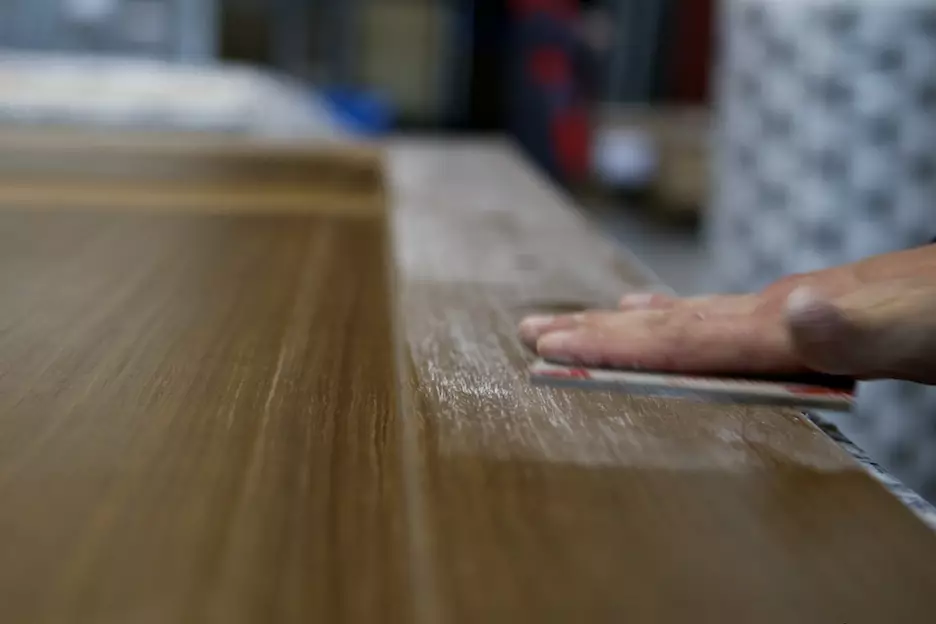
5. Re-applying varnish requires special accuracy, apply the material evenly with a thin layer. The subsequent layers are applied only after complete drying of the previous ones.
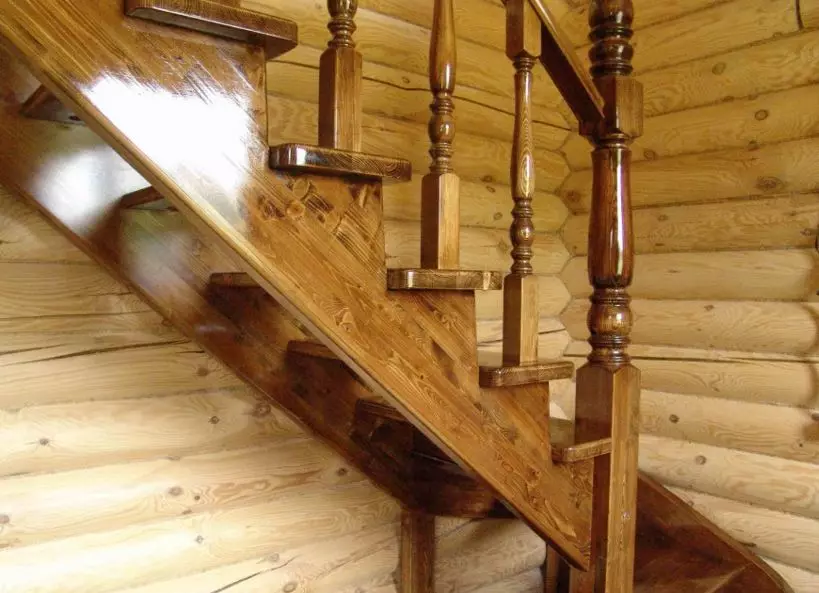
Ready lacquer need to be captured and gaining strength. Drying period directly depends on how many layers were applied to the surface. What are them more, the longer the drying process. On average, the coating dries after 7-10 days.
Additional recommendations
The high-quality painting of the ladder from the tree includes the right approach from the Malar Malary. In order for the result to justify your expectations, and I did not have to repeat the painting, we recommend using the following tricks:- Experimental painters of the stairs still face at the construction stage of the house when the designs are not assembled, because it is easier and more convenient.
- If the staircase is already installed, it is best to paint it through one step so that it was to stand on, and after drying the finished steps to cover the rest.
- Coloring works are always starting from the upper step. However, if the house has another output (descent) from the second floor, you can start with the bottom.
- The last two layers of paint or varnish are necessarily applied along the structure of wood - this will eliminate the appearance of visible divorces after drying the coating.
- If you are not sure that the paintwork is dried, walk on a small area in socks or soft knitted slippers and see, traces remained or not.
- So that the painted staircase is finally dried, add to the reserved time for drying another five hours.
The staircase leading to the second floor is one of the important components of the interior decoration of the private dwelling. The impression of guests about the owner of the house depends on its appearance. It can be a two-color, can be painted as paints, varnishes and tinting vessels. The choice of material is based on your personal preferences and expectations. And so that the end result does not fail, it is worth mastering at least minimal skills of working with paint products.
Tips of home masters (2 video)
Options Painting Stairs (50 photos)
